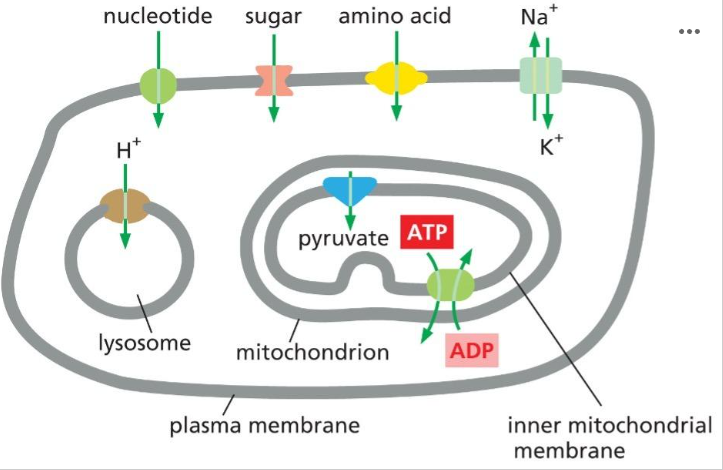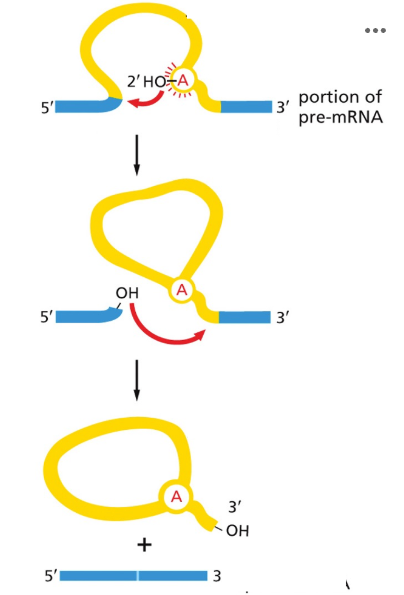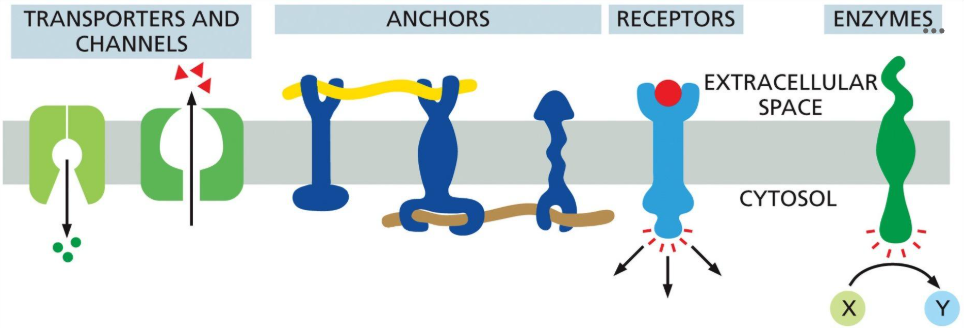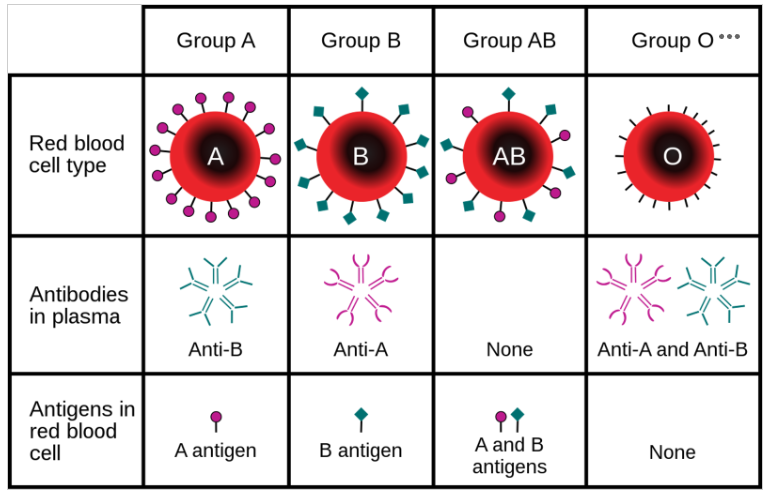FINAL YAY
1/126
There's no tags or description
Looks like no tags are added yet.
Name | Mastery | Learn | Test | Matching | Spaced |
|---|
No study sessions yet.
127 Terms
The central dogma provides a framwork for thinking about how genetic information is copied and used to produce structural and catalytic components of the cell. What is the order of components and biochemical processes that best correlates with the tenets of the central dogma?
DNA [transcription] RNA [translation] protein
Changes in DNA sequences from one generaton to the next may result in offspring that are altered in fitness compared with their parents. This process of change and selection over the course of many generations is the basis of:
evolution
Prokaryotic cells do not possess
a nucleus
A covalent bond between two atoms is formed as a result of the
sharing of electrons
An ionic bond between two atoms is formed as a result of the
transfer of electrons from one atom to the other
When atoms are held together by _____, they are typically referred to as ______.
ionic interactions; salts
_____ play an important role in organizing lipid molecules with long hydrocarbon tails into biological membranes.
Hydrophobic forces
Cholesterol is an essential component of biological membranes. Although it is much smaller than the typical phospholipids and glycolipids in the membrane, it is a(n) __________ molecule, having both hydrophilic and hydrophobic regions.
amphipathic
To break a glycosidic bond, a(n) _______ reaction will be performed.
hydrolysis
Polypeptides are synthesized from amino acid building blocks. The condensation reaction between the growing polypeptide chain and the next amino acid to be added involves the loss of a(n)
water molecule
The variations in the physical characteristics between different proteins are indluenced by the overall amino acid compositions, but even more important is the unique amino acid
sequence
The correct folding of proteins is necessary to maintain healthy cells and tissues. The presence of unfolded proteins is associated with some neurogenerative disorders such as Alzheimer’s disease, Huntington’s disease, and Creutzfeldt-Jakob disease (the specific faulty proteins is different for each disease). What happens to these disease-causing unfolded proteins?
They form protein aggregates.
True or False: Disulfide bonds stabalize but do not change a protein’s final confirmation.
True
Molecular chaperones can work by creating an “isolation chamber.” What is the purpose of this chamber?
This chamber serves to protect unfolded proteins from interacting with other proteins in the cytosol, until protein folding is completed.
Beta sheets can participate in the formation of amyloid fibers, which are insoluble protein aggregates. What drives the formation of amyloid fibers?
beta-sheet stabilization of abnormally folded proteins.
Some antibiotics target features that are unique to bacterial cells and absent from our own cells. What would present a safe target for a new antibiotic?
cell wall
Which cellular component separates the DNA of eukaryotic cells from the cytosol?
Nuclear membrane
Protein molecules that have a quarternary structure will always have two or more of _______?
Polypeptides
What does the primary structure of a protein refer to?
The linear amino acid sequence of the protein.
How do protein, nucleic acid, and polysaccharide molecules polymerize (grow in length)?
by condensation reactions
Which molecule is used as the primary source of chemical energy for tasks within a cell?
ATP
What is the most inclusive definition of a model organism (model system)?
an organism with a biological system that is representative of the same system in other organisms
What is the typical pH of biological fluids in humans, such as blood and extracellular fluid?
7.4
Which targets a protein to the 26S proteasome for degradation?
a ubiquitin chain
Where is the chemical energy stored in ATP?
The phosphate groups that repel each other due to multiple negatively charged atoms
What is a peptide bond?
a covalent bond formed when the carboxyl group of one molecule reacts with an amino group of a different molecule
Why are pH and temperature so important in enzyme kinetics?
Enzymes perform best at certain conditions and the pH and temperature of its environment can also damage an enzyme. Proteins can become denatured if the pH is unideal or if the temperature is too hot. At the same time, a higher temp would result in better performance, but there is a point where it becomes too much.
Why are model organisms vital to the field of cell/molecular biology? Name three model organisms.
Model organisms are necessary because they share characteristics of many other organisms and provide a good way for scientists to study and process and test hypotheses on. They are abundant enough that it is not an issue. 3 examples are zebrafish, drosophila, and flat worms.
Describe competitive and non-competitive inhibition.
In competitive inhibition, an inhibitor molecule BLOCKS an enzyme's active site, preventing the substrate from binding. In non-competitive inhibition, an inhibitor molecule binds to a DIFFERENT site on the enzyme, altering its shape and preventing the substrate from binding to the active site.
Name the six most abundant atoms in biological molecules.
C, H, N, O, P, S
Enzyme that unwinds DNA
DNA helicase
Fragments of copied DNA created on the lagging strand.
Okazaki fragments
The strand that is copied in a continuous way, from the 3’ to 5’ direction.
Leading strand
Builds a new DNA strand by adding complementary bases
DNA Polymerase
Stabilizes the DNA molecule during replication
Binding proteins
Strand that is copied discontinuously because it is traveling away from helicase
Lagging strand
Initiates the synthesis DNA by creating a short RNA segment at replication fork
Primer
Why is replication called “semi-conservative”?
It is called semi-conservative because each time a new synthesized DNA molecule is made, it consists of one original strand and one newly synthesized strand.
How many bases are in a codon?
3
What tRNA anticodons would be complementary to the following mRNA codons?
AAG:
GGC:
UUU:
UUC
CCG
AAA
For tRNA molecules with the following anticodons, what mRNA codon will they temporarily bind to during translation?
GAG
UCA
GAA
CUC
AGU
CUU
What amino acids will be carried by tRNA molecules with the following anticodons?
GCG
CUU
AGU
Arginine
Glutamic
Serine
List all possible codons for Aspartic acid (Asp)
GAC, GAU
List all possible codons for Leucine (Leu)
UUA, UUG, CUU, CUC, CUA, CUG
Nucleotide
the building blocks of nucleic acids and consist of nitrogenous bases, a phosphate group. and a sugar
Nucleic Acid
polymer of many nucleotides, such as DNA and RNA
Amino acid
building block of proteins and combination of 3 from a selection of 29 forms proteins
Protein
molecule composed of a chain of amino acids
Transcription
synthesizing RNA molecules from DNA template
Translation
when mRNA is decoded to form proteins
Some cells express aquaporin proteins- they are channel proteins that facilitate the flow of water molecules through the plasma membrane. What regulates the rate and direction of water diffusion across the membrane?
the concentration of water on either side of the membrane
What is most likely to occur after the lipid bilayer is pierced/damaged?
the membrane reseals
Which of the following types of lipids is the most abundant in the plasma membrane?
phospholipids
Consider a transport vesicle containing a membrane glycoprotein. The glycoprotein and the vesicle’s phospholipids are delivered to the plasma membrame. What is an accurate description of the outcome of this process?
The phospholipids that are delivered to the noncytosolic face (inside) of the plasma membrane used to be in the interior (luminal) face of the vesicle.
What is true regarding the behavior of lipids in cell membranes?
Membrane lipids move laterally within the plain of the membrane.
Cholesterol serves several essential functions in mammalian cells. What is NOT influenced by cholesterol?
membrane thickness
What is influenced by cholesterol?
membrane permeability
membrane fluidity
membrane rigidity
If you were a cancer researcher looking to edit a mutation in a genome, which molecular tool for precise genome editing would you choose?
CRISPR/Cas9
Membrane proteins, like membrane lipids, can move laterally by exchanging positions with other membrane components. Which type of membrane protein is expected to be the least mobile, based on its function?
anchors
The stimulation of auditory nerves depends on the opening and closing of channels in the auditory hair cells. Which type of gating mechanism do these cells use?
mechanically gated
Which of the following ions is most abundant outside a typical mammilian cell?
Na+
Which of the following ions is most abundant inside a typical mammilian cell?
K+
Which of the following substances is most commonly used to help purify a membrane protein by removing the lipids?
detergent
Membrane lipids are capable of many different types of movement. Which does NOT occur spontaneously in biological membranes?
moving between the lipid bilayers
Plasma membranes are extremely thin and fragile, requiring an extensive support network of fibrous proteins. This network is called the ______?
cell cortex
Where does most new membrane (i.e., phospholipid) synthesis take place in a eukaryotic cell?
in the smooth endoplasmic reticulum
Pumps are transporters that can harness energy provided by other components in the cells to drive the movement of solutes across membranes, against their concentration gradients. This type of transport is called _______?
Active Transport
Which of the following channels would NOT be expected to generate change in voltage by movement of its substrate across the membrane?
an aquaporin
Red blood cells have been very useful in the study of membranes and the protein components that provide structural support. Which of the following proteins is the principal fibrous protein in the cortex of the red blood cell?
spectrin

Assume that all three exons can be alternatively spliced, how many distinct mRNAs can be generated from the gene below?
7
The oligosaccharide chains found in the carbohydrates that are associated with the plasma membrane are incredibly diverse. All but one of the following options explain how this diversity is achieved. Which option is NOT a way that carbohydrates can vary at the plasma membrane? (HINT: think M&Ms)
variation in the side of the plasma membrane to which they are bound
What category of membrane transport are channels a part of?
facilitated diffusion
A neuron and a white blood cell have very different functions. For example, a neuron can receive and respond to electrical signals, while a white blood cell defends the body against infection. This is because
the neuron produces some mRNAs that the white blood cell does not.
Which of the following statements about RNA interference (RNAi) is true?
RNAi is induced when double-stranded, foreign RNA is present in the cell.
Which of the following is NOT the step of mRNA processing?
RNA Silencing
Choose the INCORRECT statement about 5' cap.
increase the life span of RNA
What are correct statements about the 5’ cap?
recognized by the transport protein
provide stability to RNA
participate in the translation initiation
Which of these terms describes the mechanism behind a single pre-mRNA being processed into multiple different products products?
Alternate splicing
Which of the following does NOT occur before a eukaryotic mRNA is exported from the nucleus?
The ribosome binds to the mRNA
Which of the following statements about the carbohydrate coating of the cell surface is FALSE?
The carbohydrate coating only serves as a protective coating.
There are several ways that membrane proteins can associate with the cell membrane. Membrane proteins that extend through the lipid bilayer are called _________ proteins and have _________ regions that are exposed to the interior of the bilayer.
transmembrane, hydrophobic
Membrane-associated proteins do not span the bilayer and instead associate with the membrane through an α helix that is _______.
amphipathic
Other proteins are _______ attached to lipid molecules that are inserted in the membrane.
covalently
__________ membrane proteins are linked to the membrane through noncovalent interactions with other membrane-bound proteins.
Peripheral
If the ions move in opposite directions, the transporter is considered a(n) _______.
antiport
transporter moves both ions in the same direction across the membrane, it is considered a(n) _______.
symport
True or false: Most ion channels are gated, which allows them to open and close in response to a specific stimulus rather than allowing the constant, unregulated flow of ions.
True
True or False? Scramblases move phospholipids laterally (i.e., sideways) in the membrane.
False
True or False: Flippases move phospholipids from the outer leaflet to the inner leaflet of the cell membrane.
True
True or False: Floppases move phospholipids from the inner leaflet to the outer leaflet of the cell membrane
True
True or False: Aquaporin channels are found in the plasma membrane and allow the rapid passage of water molecules and small ions in and out of cells.
False
True or False: CO2 and O2 are water-soluble molecules that DO NOT diffuse freely across cell membranes.
False
The backbone of a polypeptide is hydrophilic and thus incompatible with the hydrophobic interior of a bilayer membrane. Explain how the backbone of a transmembrane protein is shielded from the membrane so that it can stably incorporate itself into the bilayer.
Transmembrane proteins span the lipid bilayer and are stabilized by forming alpha helices or beta barrels, which shield the hydrophilic backbone through internal hydrogen bonding. Their outward-facing side chains are usually nonpolar, allowing them to interact favorably with the membrane’s hydrophobic core.
Explain the reasons why membrane proteins are more difficult to isolate and purify for studies compared to cytosolic proteins. What do scientists use to isolate membrane proteins for these studies?
Membrane proteins are more difficult to isolate for studies compared to cytosolic proteins because the locations of these two membrane types. If we look at membrane proteins, they are within the cell membrane, withit its hydrophobic inside made of lipids. It is not an easy thing to break the bond there apart, so scientists must use detergents to isolate these proteins, as they’re the only thing that are able to break away at lipids.
What chemical principles explain the observation that a protein-free lipid bilayer is a billion times more permeable to water than to a sodium (Na+) ion?
A protein-free lipid bilayer is much more permeable to water than to sodium ions (Na⁺) due to differences in size, charge, and polarity. Water is small and polar but uncharged, allowing it to diffuse slowly through the bilayer, even without protein channels. In contrast, Na⁺ is a charged ion, and the hydrophobic core of the lipid bilayer strongly repels charged species. This electrostatic barrier makes it extremely difficult for Na⁺ to cross the membrane without the help of specific ion channels or transporters.

Provide a thorough explanation of the figure below, including a brief description and significance of each item.
This is a figure depicting a mitchondria and lysosome within a cell and how organelles have specific channels in their membranes. In the figure, we can see a nucleotide, sugar, amino acid, and Sodium/Potassium pump. These allow those molecules to pass through the plasma membrane. Inside the mitochondria we can see there is an inner mitochondrial membrane additional to its outer membrane. We can see it has a specific pyruvate channel and an ATP/ADP pump, which shows ADP going inside where it will turn into ATP, as the mitochondria provides the ATP for the cell, and 30% of that ATP goes back to the cell to power the pumps which are active transport and require energy to function. Looking at the lysosome we can see the H+ ion channel provides this organelle its acidity so it can perform its function of acting as the cell's stomach that is able to break down waste.
Describe the roles of flippases, floppases, and scramblases. In your answer, discuss the directionality of each and how their activity maintains membrane asymmetry.
Flippases flip phospholipids from OUTER to INNER in the cell membrane. Floppases do the opposite, doing INNER to OUTER , and scramblases are able to do BOTH, putting the phospholipids at random. The actions of these enzymes allows the membrane to remain assymmetrical as it is creating a random pattern of sorts, or random assortment of the phospholipids.

Carefully analyze the figure below. Describe the sequence of events illustrated, using accurate scientific terminology. Be sure to explain each step in detail, highlighting the key processes, and this mechanism's overall importance.
In this figure, we can see that RNA splicing is occurring. During this process, introns are removed from the pre-mRNA through a series of precise steps. Special nucleotide sequences at the beginning and end of each intron signal where splicing should occur. A critical early event involves the 2' hydroxyl group of an adenosine at the branch point within the intron attacking the 5' splice site, forming a looped lasso-like structure called a lariat. This lariat is then excised through the formation of a phosphodiester bond, effectively "snipping" the intron out and allowing the flanking exons to be joined together.

What are the group of proteins in the figure below collectively known as?
Intracellular Membrane Proteins

Describe the figure and it's relevance to cell/molecular biology.
This figure depicts the different types of blood types. This is relevant to molecular biology because the way by which we identify blood types involves looking at the proteins these cells have and how it interacts with others at the molecular level. Antigens are molecules that these cells have that match the blood type's name because that is what it can bind to and accept, and antibodies are the molecules that indicate what the cell will not. If we look at red blood cell type A, we can see it has proteins which bind to other A proteins, or antigens, and it has anti-B blood type antibodies, which work almost like shields. If this blood type were to receive blood that contains B antigens, then it would repel them. Fortunately another blood type exists: O. O blood type has no antigen-proteins but it does have A and B antibodies. So we can see that O blood type can give its blood to anyone since it doesn't contain any antigens that can be repelled, but it can't accept any other blood type because it repels their proteins. Theres another bloodtype, AB, which has proteins-antigens for both A and B, so it can't give its blood to anyone, not to A or B, since they repel one of the two, but only to itself. However it has no antibodies, so it won't repel anything itself, and can freely bind and accept anything.